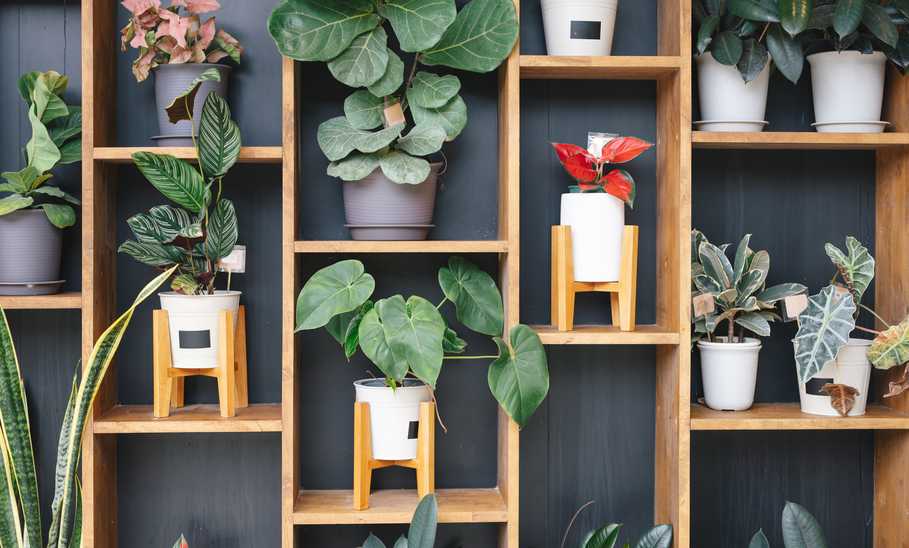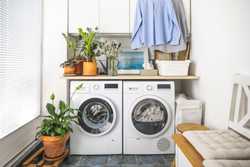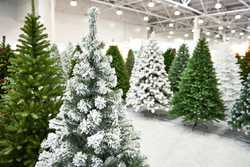Indoor plants are a great way to liven up a window sill, desk, or corner of a room. I love having them on my home office desk, in the kitchen, and everywhere in between. With the right care, some even bloom. If you’re thinking about getting indoor plants for the first time, or you want to add to a growing collection, read on to learn what plant experts that I consulted have to share.
Our top picks for best indoor plants
Best indoor plant for small spaces: Air Plant

Air Plant
The air plant is my newest plant “pet,” and its glass globe looks great on my home office desk. “Air plants are a great choice for those with small spaces who want to add greenery to their decor. Since they don't require soil, you can display them anywhere that receives bright, indirect light,” says Katharine Wu, Founder of Plants for Pet Parents. They look great in wall hangers or amongst tabletop displays. Just mist them every few days and soak them thoroughly in water once every week or so, making sure to let them dry completely to avoid root rot.” You can encourage proper drying by gently shaking the plant after watering and then leaving it upside down to finish draining.
Specifications
- Size: 2 to 12 inches tall when kept indoors but can get much larger in their native outdoor environment
- Fertilize: Bromeliad food or low-nitrogen fertilizer once a month in spring and summer
- Water: Submerge in water for 30 minutes every 7 to 10 days; mist every few days
- Light/sun exposure: Medium to bright indirect light a few hours a day (e.g. morning sun)
- Soil condition/pH: Not applicable for most, but the “paddle” types prefer an orchid mix
- Generally cat/dog safe: Yes
- Price on publish: $20
Pros:
- No potting soil needed
- Can be attractively displayed in glass globes
- Low-maintenance
Cons:
- Potential for root rot if not thoroughly dried after watering
The bottom line:
These fun plants are easy to care for and can be kept in attractive glass globes or hanging containers.

Peperomia ‘Hope’
As a former desert dweller, this is one of my favorite plants because of the succulent-like look of the leaves. Wu says, “Peperomias are the perfect indoor plant for beginners. As semi-succulents, they are hardy and don't require much to thrive. Just make sure they have well-draining soil and consistent indirect light, and be careful not to water too frequently (once a week max).”
Specifications
- Size: Variable but generally 6 to 12 inches
- Fertilize: Once a month in the growing season (mainly summer) with a 3:1:2 fertilizer (30% nitrogen, 10% phosphorus, 20% potassium)
- Water: Water when the top 2 inches of soil is dry; roughly every 1 to 2 weeks in the spring and summer, every 2 to 3 weeks in fall and winter
- Light/sun exposure: Bright, indirect light for at least 5 hours a day
- Soil condition/pH: Aerated, well-draining soil, pH 6.0 to 7.0
- Generally cat/dog safe: Yes
- Price on publish: $22
Pros:
- A Low-maintenance plant and great for beginners
- Works well for small spaces
- Non-toxic to cats and dogs
Cons:
- Leaves can fade or drop if kept in low-light
The bottom line:
This attractive trailing plant is a great option for beginners, and it’s generally pet safe.
Best indoor plant for clean air: Spider Plant

Spider Plant
This popular house plant looks great in a pot or hanging basket. Michelle Ahn, Founder of Oh the Places You’ll Grow, says, “The spider plant is known for its air-purifying capabilities. It can filter certain toxins from the air like carbon monoxide. These plants are incredibly easy to propagate because they grow "pups" or offshoots from the mother plant that can be removed and planted into its own pot as a new plant.” (They also made our list of the best plants for bedrooms.)
Specifications
- Size: Up to 12 to 15 inches tall
- Fertilize: Every 3 to 4 months (excessive fertilizing can lead to browning)
- Water: Once a week in spring and summer, every 2 to 3 weeks in fall and winter; wait until the top 1 inch of soil is dry
- Light/sun exposure: Prefers medium to bright indirect light for 6 to 8 hours a day
- Soil condition/pH: Loose, well-aerated, loamy soil, pH 6.0 to 6.5
- Generally cat/dog safe: Mildly toxic. Can cause digestive upset for cats and dogs and can be hallucinogenic for cats
- Price on publish: $22
Pros:
- Easy to care for
- Can be kept in a room with partial sun
- Easy to propagate
- Studied by NASA for its ability to clear pollutants like carbon monoxide and formaldehyde (but household environments and lab conditions aren’t likely to be similar)
Cons:
- Doesn’t like tap water
- Prefers humid environments
The bottom line:
The easy-to-care-for spider plant is good for beginners and is known for its air-purifying abilities.

Bird of Paradise
The smaller varieties of this tropical shrub can be kept indoors, and Ahn says, “This plant is a show stopper. Outdoors, they are recognizable for their beautiful, colorful flowers. While flowering is rare when grown indoors, their large leaves and tall stems make them a statement piece in any home. They are best suited for bright, sunny spots.”
Specifications
- Size: Up to 6 feet tall though there are outdoor species that can reach about 30 feet
- Fertilize: In spring and summer, apply half-strength fertilizer every two weeks, but avoid over-fertilizing. If the plant is healthy and not dormant, consider amending the soil with slow-release fertilizer instead.. Don’t fertilize for several months after repotting.
- Water: Once a week in spring and summer, every two weeks in fall and winter; wait until the top 2 inches of soil is dry; does not like soggy soil
- Light/sun exposure: Minimum of six hours full sun a day
- Soil condition/pH: Loamy, organically-rich, well-aerated soil (e.g. with clay), pH 5.5 to 7.5
- Generally cat/dog safe: No
- Price on publish: $7.99 for a small starter plant
Pros:
- Distinctive appearance, even when not in bloom
- Some varieties are considered to maximize good feng shui
- Fairly easy to care for
Cons:
- Not suitable for low-light rooms
The bottom line:
The Bird of Paradise is a great tropical plant to keep indoors if you’re looking for a statement piece.
Best indoor plants for health: Aloe Vera

Aloe Vera
Aloe Vera, or Aloe barbadensis, is an easy desert plant to keep indoors if you have a spot that gets full sun (or very bright indirect light) for at least 6 hours a day. Ahn adds, “This plant has medicinal properties that are widely used to help with skin ailments like sunburn. They are also known to purify the air.”
Specifications
- Size: Up to 3 feet but often stays around 8 to 10 inches when grown indoor
- Fertilize: Use succulent fertilizer once in spring, if at all (thoroughly water the plant first)
- Water: Every 2 to 4 weeks; let the soil dry out between waterings
- Light/sun exposure: At least 6 to 8 hours of full sun or very bright indirect light a day, though 12 to 14 hours is ideal
- Soil condition/pH: Very well-draining cactus soil in a pot with drainage holes, pH 7.0 to 8.5
- Generally cat/dog safe: No
- Price on publish: $21.49
Pros:
- Low-maintenance watering
- Attractive desert plant
- Gel inside the leaves can be soothing for sunburns
Cons:
- Causes digestive upset and lethargy if eaten by cats or dogs
The bottom line:
Aloe Vera is a fun way to add desert decor to the sunny spots in your home.
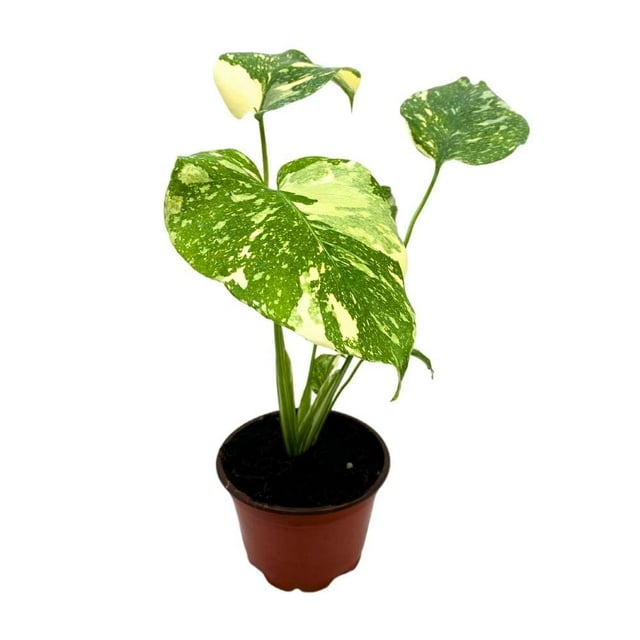
Monstera Thai Constellation
Like pets, plants are so Instagrammable. Ahn says, “This plant was once only seen in the homes of rare plant collectors and prized for their rarity and lofty price point. Now, many nurseries carry them at affordable prices, allowing this once unattainable plant to be a reality in many plant lovers' homes. Their stunning variegation resembles a starry constellation, and they share the characteristic split leaf pattern of all monsteras as they grow. The Thai Con is truly the photogenic ‘it’ plant of the moment.”
Specifications
- Size: 4 to 8 feet or taller
- Fertilize: Once a month in spring and summer, don’t fertilize in fall and winter
- Water: Once a week in spring and summer (and mist it twice a week), less in fall and winter (wait until the top few inches of soil is dry)
- Light/sun exposure: 6 to 8 hours of bright indirect light a day (avoid direct light)
- Soil condition/pH: Organically-rich soil with perlite, bark, etc for proper drainage (pot must have adequate drainage holes, too), pH 5.0 to 7.5
- Generally cat/dog safe: No
- Price on publish: $74.99
Pros:
- Beautiful marbled leaves
- Slower growing
- Great for rooms that get more light, like a sunroom
Cons:
- Can get root rot if overwatered
- Higher price point
The bottom line:
This beautiful, slower-growing plant makes a great Instagrammable addition to rooms with bright indirect light.
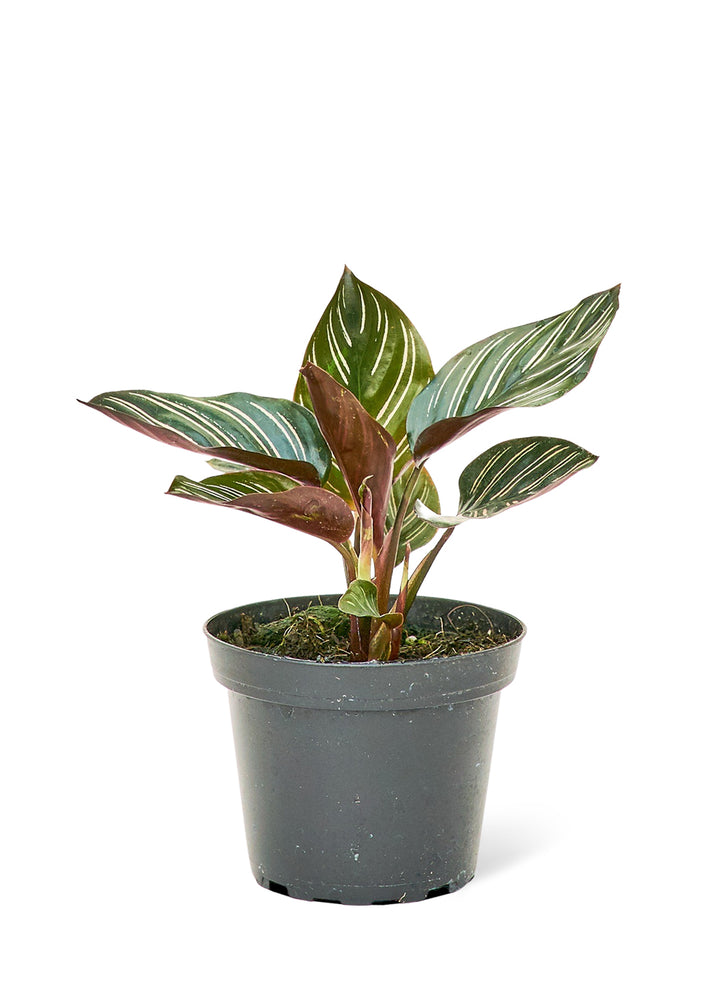
Calathea ‘Pinstripe’
Wu says, “Bathrooms are great environments for beautiful, but finicky, Calathea. They require humidity to replicate their tropical natural habitat, so your warm showers will also revitalize your plants. Calatheas are also fun to observe throughout the day because their leaves fold down in the daytime and fold up at night. Indirect light, well-draining soil, and filtered water will keep your Calathea happy.”
Specifications
- Size: Up to 2 feet tall
- Fertilize: Use half-strength fertilizer every 2 to 4 weeks in spring and summer
- Water: Every 5 to 14 days, depending on the size of the pot, conditions, and time of year; avoid tap water
- Light/sun exposure: 8 to 10 hours of medium to bright indirect light a day
- Soil condition/pH: Well-aerated, loose soil (e.g. amend the soil with orchid bark), pH 6.5 to 7.0
- Generally cat/dog safe: Can cause digestive upset
- Price on publish: $22
Pros:
- Striking pinstripe leaves
- Doesn’t get huge
- Works well in bathrooms with bright indirect light
Cons:
- Harder to care for compared to some plants on this list, so not great for plant beginners
The bottom line:
If you’re well-versed in plant care, the Calathea ‘Pinstripe’ can make a nice addition to your bathroom.

Fiddle-Leaf Fig
During my undergraduate days at the University of Arizona, there was a restaurant in the student union called The Fiddlee Fig. I only recently realized it’s a play on words for this West African jungle plant. Ahn says, “This ficus is a classic indoor houseplant known for their shiny, wide leaves that are reminiscent of a fiddle. These elegant-looking plants thrive in sunnier locations.” Like Arizona! However, they prefer indoor temperatures between 65 F and 75 F to thrive.
Specifications
- Size: 6 to 15 feet, but the dwarf variety reaches 3 to 4 feet
- Fertilize: Once a month in spring and summer but if the plant is repotted once a year, fertilizing isn’t needed. Use a foliage plant fertilizer (3-1-2 or 16-5-11 NPK ratio).
- Water: Every 1 to 2 weeks with room temperature water (ideally filtered or distilled), allowing the top few inches of soil to dry out between waterings. Watering in winter may be more infrequent (e.g. once a month) but needs to stay consistent. Bottom watering is ideal to avoid the leaves getting wet.
- Light/sun exposure: 6 to 8 hours a day of bright, indirect light (rotate the pot every few days so all sides get sun)
- Soil condition/pH: Nutrient-rich, well-draining soil, pH 5.5 to 7.0
- Generally cat/dog safe: Can cause mild digestive upset; the sap can cause skin irritation
- Price on publish: $34.99
Pros:
- An attractive larger house plant
- Good for those who are consistent with watering
- Comes in a dwarf variety for those who do not want a larger tree
Cons:
- A bit finicky, so may not be ideal for a beginner
The bottom line:
With its lyre-shaped leaves, the Fiddle-Leaf Fig tree adds a large pop of green to bright indoor spaces.
Best indoor plant for low light: ZZ Plant
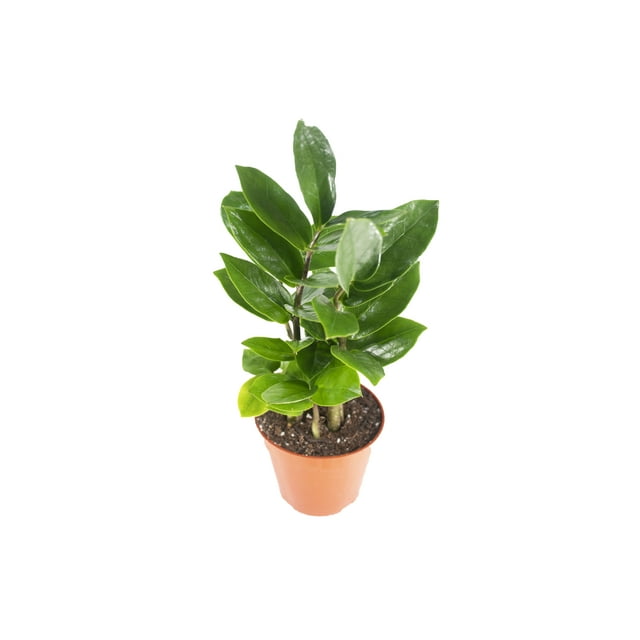
ZZ Plant
Some living spaces, like apartments, don’t have windows facing every direction, which can make certain plants more challenging to keep. However the ZZ plant is fairly flexible with its lighting needs. Ahn says, “While this plant is tolerant of low light, like all houseplants, it will thrive in brighter locations. Its glossy, dark green foliage resembles feathers. They are highly adaptable because they tolerate neglect and survive with infrequent watering.”
Specifications
- Size: 2 to 3 feet tall, sometimes taller
- Fertilize: Every 6 to 8 weeks with diluted fertilizer in spring and summer
- Water: Every 2 to 3 weeks when the top 2 inches of soil is dry
- Light/sun exposure: Prefers 12 hours of bright indirect light a day; can tolerate low light, but it will slow growth and cause leggy stems
- Soil condition/pH: Nutrient-rich, well-draining soil, pH 6.0 to 7.0
- Generally cat/dog safe: No
- Price on publish: $17.99
Pros:
- Can tolerate low light
- Easy to care for
- Infrequent watering compared to some indoor plants
The bottom line:
The highly adaptable, low-maintenance ZZ plant is great for rooms with less light, but it will thrive if more light is available.
Best low maintenance indoor plant: Snake Plant

Snake Plant
If you travel frequently and don’t have a plant-sitter or you have a low-light living space or office, Ahn says, “This beautiful plant is exceptionally resilient and can thrive in low-light conditions. Its succulent-like leaves store water, allowing them to withstand periods of drought. Their hardiness makes them suitable for beginner plant parents.”
Specifications
- Size: 6 inches to 3 feet
- Fertilize: Every other month, spring through fall, if receiving adequate sun
- Water: Every 3 weeks or when the top 2 to 3 inches of soil is dry
- Light/sun exposure: Prefers 8 to 10 hours of bright indirect light a day; can tolerate low light, but it will slow growth and may discolored leaves and leggy stems
- Soil condition/pH: Loose, well-draining soil, pH 5.5 to 7.5
- Generally cat/dog safe: No
- Price on publish: $19.99
Pros:
- A great way to add greenery to office spaces
- Can tolerate low light but consider moving it to brighter spots when available
- Low-maintenance watering
Cons:
- Causes digestive upset and lethargy if eaten by cats or dogs
The bottom line:
The Snake Plant is a low-maintenance way to add pops of green to indoor spaces.
Best smelling indoor plant: Lavender
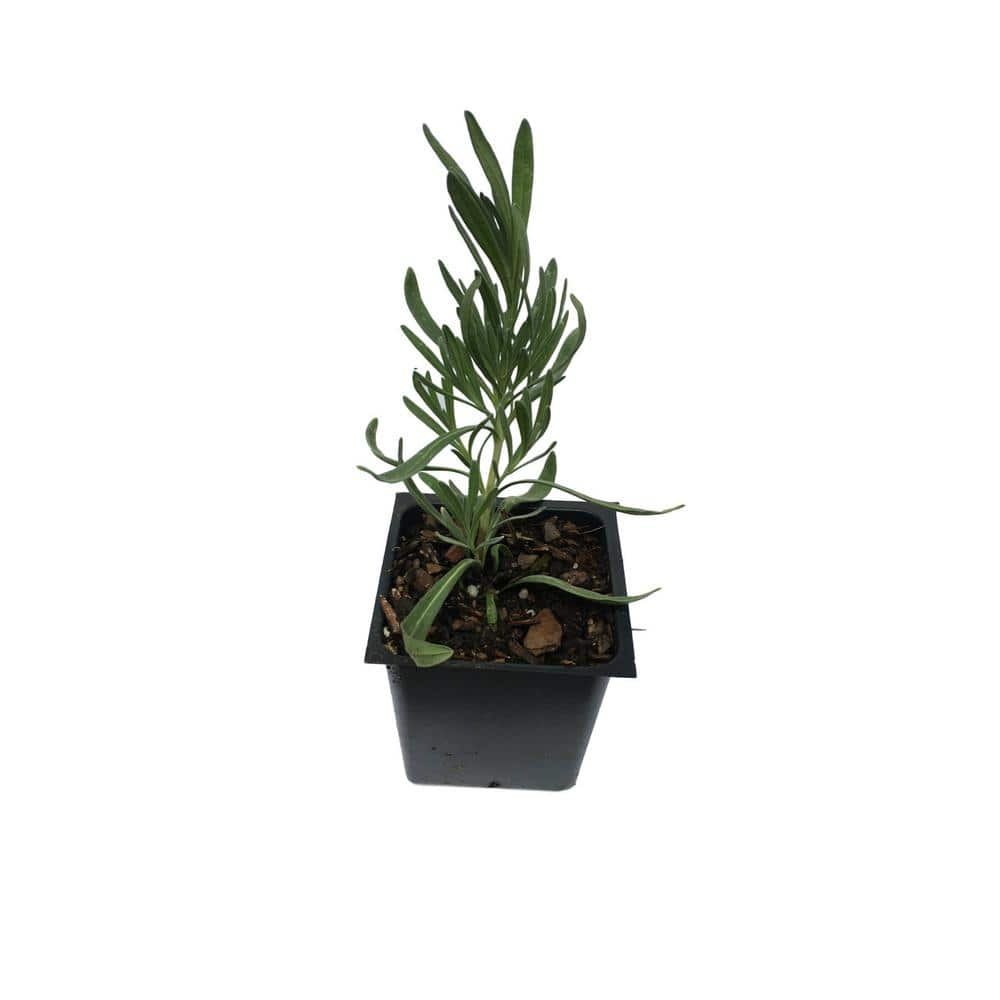
Lavender
Lavender isn’t just for outdoors. Ahn says, “Lavender plants can be grown indoors and produce a subtle, soothing fragrance associated with relaxation.” You can do lots of things with this plant, such as drying it for arrangements, making lavender-infused massage oil, or making soaps, creams, and bath salts.
Specifications
- Size: 1 to 3 feet tall (dwarf varieties: 15 to 20 inches)
- Fertilize: Every 4 to 6 weeks in spring; don’t over fertilize
- Water: Every 1 to 2 weeks; allow the soil to dry completely before rewatering
- Light/sun exposure: Prefers 6 to 8 hours of full sun a day but can tolerate less (3 to 6 hours)
- Soil condition/pH: Sandy or loamy soil, pH 6.5 but closer to 8.0 is preferred
- Generally cat/dog safe: Not cat safe; can cause digestive upset in dogs
- Price on publish: $12.49
Pros:
- Has many uses, such as making homemade soap and dried floral arrangements
- Can tolerate less than 6 hours of sun a day
- Supplement with a plant light if needed
- Comes in dwarf varieties
The bottom line:
To have fragrant, year-round blooms, add lavender to your indoor collection of plants.
How we tested and selected the best indoor plants
Expert advice
I consulted three experts in the plant industry for recommendations on indoor plants, information on soil and soil amendments (e.g. perlite, pumice, calcined clay), light requirements, and watering.
Variety of care needs
The plants in this article provide shoppers with a variety of options when it comes to watering, space, and lighting. Some plants on this list need less space, light, and watering, while others require more for plant owners who like a more hands-on experience.
Research and personal experience
In addition to my years of experience owning cacti, succulents, Peperomia, and orchids, I researched studies on the health benefits of indoor plants. As a veterinarian, I also wanted to provide people with information on plants that are and aren’t safe while clarifying that “non-toxic” doesn’t necessarily mean a pet won’t have any issues if they ingest the plant.
What to consider when buying indoor plants
Care requirements
An indoor plant’s needs are one of the most important factors when determining if it’s right for you. You’ll have to consider whether your space has the proper type of lighting (bright versus indirect) and the proper amount of lighting that a plant needs. For example, if a plant requires a minimum of 6 hours of south-facing sun, does your office or living space have that? Or if you’re often gone for weeks at a time, can your indoor plants tolerate that, or will you need to get a plant sitter?
Space
You’ll need to evaluate how much space you have for a plant to grow. Some indoor plants start out small but can become large over time, like the Bird of Paradise, a shrub that can reach up to 6 feet tall indoors. Other plants, like miniature African Violets, stay endearingly small at a maximum diameter of about 6 inches.
Pets
If you have pets, you’ll want to research potential indoor plants to determine if they’re toxic. As a veterinarian, one of the reasons I wanted to write this article (besides that I love indoor plants) is to let people know that just because a plant is listed as non-toxic (or generally pet-safe) doesn’t necessarily mean it won’t cause any issues for your pet. Non-toxic means that a plant is not likely to be life-threatening, but some non-toxic plants can cause symptoms like vomiting, diarrhea, dehydration, and lethargy if eaten.
If you keep a toxic plant, keep it out of reach of pets (which can be challenging with cats and birds), and be mindful of clearing up dead leaves before they fall to the ground.
If you have birds, guinea pigs, rabbits, or other exotics, do additional research to ensure a cat/dog-safe plant is also safe for your pet. For example, the American rubber plant is on the ASPCA’s pet-friendly list for cats and dogs but rubber plants are toxic for birds and rabbits.
How to water and maintain indoor plants
Watering and maintaining indoor plants depends on the plant. There are a few ways to water and some plants prefer one way over others. Travis Thein, founder and owner of Sol Soils adds that watering is not so much about quantity but about frequency, and letting the medium dry at least a bit between waterings so the roots can take in oxygen as they need. Thein also notes the importance of using quality soil that drains well and contains proper conditioners that retain and slow-release water—which can mean less frequent watering. (More on soil later.)
Submerging
Submerging can mean submerging the plant or submerging the pot. With air plants, you’ll want to fully submerge the plant in water. For cacti, submerging the pot is a great way to water it. When it rains in the desert, it can actually flood, so submerging might sound unusual—except it’s not.
Bottom watering
Bottom watering is when you place a pot in a shallow tray of water and allow the water to absorb. How long will depend on the size of the container. If you’re watering an African Violet or Fiddle-Leaf Fig, bottom watering is ideal to avoid getting the leaves wet, which can discolor them.
Top watering
Watering a plant from the top is an option but there’s the potential of underwatering it. Thein says, “No plant I’m aware of wants a tiny bit of water.” With top watering, make sure water freely runs out the bottom. He adds, “Adequate drainage holes are key to avoiding watering mishaps.”
Dusting
Removing dust from plants once a month can help maximize their light exposure. For plants with smooth leaves, a damp towel or paper towel works well. For fuzzy leaves, cacti, or plants with tiny leaves, a paintbrush is great. For plants who don’t mind their leaves getting wet, rinsing in the sink—or bathtub for larger plants—is an option. When wiping leaves or brushing them, support the back of the leaf with your hand.
Air-purifying and health benefits
Air
Indoor plants have the ability to reduce the amount of carbon dioxide and volatile organic compounds (VOCs) in the air to varying degrees. Exposure to VOCs like formaldehyde can come from various sources such as certain plastics, building materials like plywood, resins in wood-based products, tobacco smoke, and gas appliances, to name a few. However, if you have one spider plant, don’t expect it to take the place of an air purifier. It’s important to consider that your indoor plant collection may not be similar to the environment and conditions of scientific studies where plants are clearing VOCs in enclosed chambers.
That said, soil in potted plants has been shown to be generally more effective than some plants like Boston Fern and Peace Lily at reducing formaldehyde levels in the air. The same study also showed that Peace Lilies are adept at removing VOCs and carbon dioxide. However a plant’s ability to reduce VOCs can be affected by various factors, including temperature and humidity.
It’s been discovered that Money Tree plants and Leopard Lilies have the ability to reduce the amount of indoor airborne particulate matter. And Golden Pothos has the ability to reduce indoor ozone but at less than 10%, the amount is quite modest.
Sleep
Though not specifically a benefit of the potted plant, lavender essential oil has been shown to improve sleep quality, specifically promoting slow-wave sleep or deep sleep. Deep sleep has been demonstrated to be important to health in various ways, such as tissue repair, memory, immunity, and glucose metabolism.
Stress
Working with indoor plants has also been shown to reduce psychological and physiological stress in young adults and increase concentration in elementary school kids. Indoor plants can reduce blood pressure, respiratory rate, and heart rate while improving cognition, specifically academic achievement. It’s also been discovered that plants can improve satisfaction with indoor work environments.
Frequently asked questions (FAQs)
Which indoor plant purifies the air the most?
“Purify” is a broad term. Keeping in mind that your houseplant situation is unlikely to the same controlled environment and conditions of the scientific studies cited above, English Ivy, Janet Craig, Peace Lily, Marginata, and Golden Pothos are some of the indoor plants adept at reducing benzene in the air, while spider plants are able to reduce formaldehyde levels in the air. Money Tree plants and leopard lilies have been shown to reduce indoor airborne particulate matter. Golden Pothos has a modest ability to reduce indoor ozone.
What are the cleanest indoor plants?
If you don’t want to deal with soil, some of the cleanest indoor plants are air plants, orchids, and Lucky Bamboo. Orchids, however, require substrate such as sphagnum moss or bark, depending on the species. “Paddle” style air plants also prefer an orchid bark mix. The lucky bamboo will grow in a container with water, but if the container doesn’t keep the plant upright (which it prefers), use pebbles or stones.
How to repot indoor plants
At some point, your indoor plants will need to be repotted, even if they haven’t outgrown their container. This is because soil eventually becomes depleted of nutrients. It’s best to do this in spring during the growth season instead of during fall and winter when temperatures are cooler, making recovery longer.
If your plant has outgrown its container, you may notice roots coming out the drainage holes or roots emerging from the top of the soil, lack of growth (though this can be for a variety of reasons), poor soil quality resulting in repeatedly dry soil and an increased need for watering, or the plant is sinking in the container from the soil compacting down.
Here’s a guide to repotting indoor plants:
- If you’re repotting because the plant outgrew its container, choose an appropriate size new container, making sure that it’s no more than one-third larger than the previous one. It should also have adequate drainage holes at the bottom. What the container is made of should also be considered. Clay pots are particularly nice compared to plastic because they’re more breathable.
- Choose the right soil. If you’re not sure which to get, do research or consult a local plant shop.
- Slide the plant out of its container but don’t use force. If it won’t come out easily, run a knife along the inside, or if it's a plastic container, gently squeeze the sides.
- If the roots have grown around in a circle, gently tease them apart and remove old soil.
- Fill the new container with enough potting mix so that when you set the old container inside, the rims are level with each other. Try filling halfway first and go from there. When the rims are flush, add more soil around the sides.
- Remove the old container and set the plant inside the new container. Add more soil until it reaches about a half-inch below the rim. Gently tamp the container to remove air. You can push the soil down with your hands, but I prefer to tamp instead because I don’t want to excessively compact the soil.
- Water thoroughly.
What is the best soil for indoor plants?
Different plants have different soil needs, so it’s not one size fits all. However, Thein emphasizes that a well-draining soil is key. He notes that a lot of plants are sold in soil that works well for ideal conditions like that of a greenhouse. These soils typically consist predominantly of peat moss, which can absorb and hold onto too much water for indoor conditions. If this happens for a prolonged period, and the root system isn’t able to breathe effectively, root rot can set in. Soggy peat moss also gives pests ideal conditions to thrive. On the flip side, peat-based soils can become hydrophobic when dry and not allow the soil to readily re-wet any longer.
Thein says the ideal soil is made up of components that “pull in water and keep that moisture available for the plant to use as they need.” A quality soil contains conditioners, like calcined clay or pumice, which slowly release the water and nutrients from fertilizing. He adds that calcined clay is a baked clay that is porous and won’t break down and suffocate plant roots. You can even make your own custom soil mix by adding in components like perlite, calcined clay, pumice, or lightweight expanded clay aggregate (LECA).
Which indoor plants work well for small living spaces?
Air plants are great for small living spaces and can also work as office plants. If you don’t have a desk, shelf, or sill to place it, air plants can also be kept in hanging containers.
Orchids are another option because they don’t take up much space and are slow-growing, producing only one to three new leaves a year. Their sphagnum moss or bark substrate also tends to make them cleaner to keep. If you’re new to orchids, avoid window sills because the temperature range can be too extreme and your orchid can get too hot or too cold. Orchids prefer temperatures between 60 and 80 F and bright indirect light.
If you have dark rooms, however, Ahns says, “Snake and ZZ plants are tolerant of low light conditions, but it is important to note that while these plants can tolerate low light, that does not mean no light. They are both very adaptable plants with minimal watering needs. However, like all houseplants, they will thrive and grow faster when placed in brighter light.”
What indoor plants are pet friendly?
Wu says, “Peperomias and Calathea are both [generally] pet-friendly options that offer a wide variety of leaf shapes and colors. Another personal favorite is the Money Tree because it is low maintenance and makes a great gift. The belief is that they bring good fortune to the recipient, so they're the perfect housewarming or birthday present for pet parents.”
Other indoor plants that are generally cat/dog safe are African Violets, Mother of Pearl succulent, and Lemon Button ferns. It’s good to keep in mind that non-toxic plants can still cause digestive upset or other symptoms if eaten in large enough amounts.
